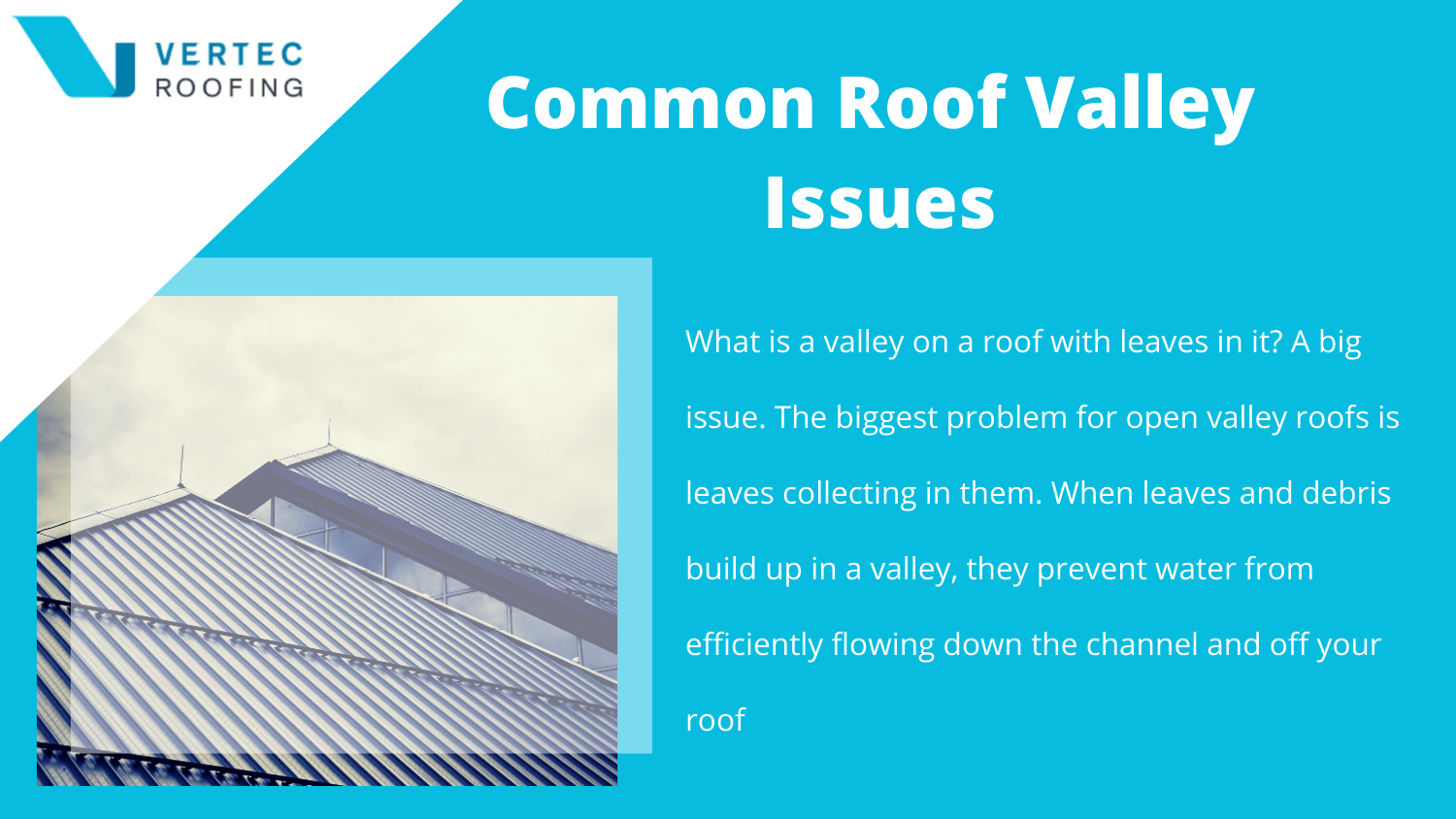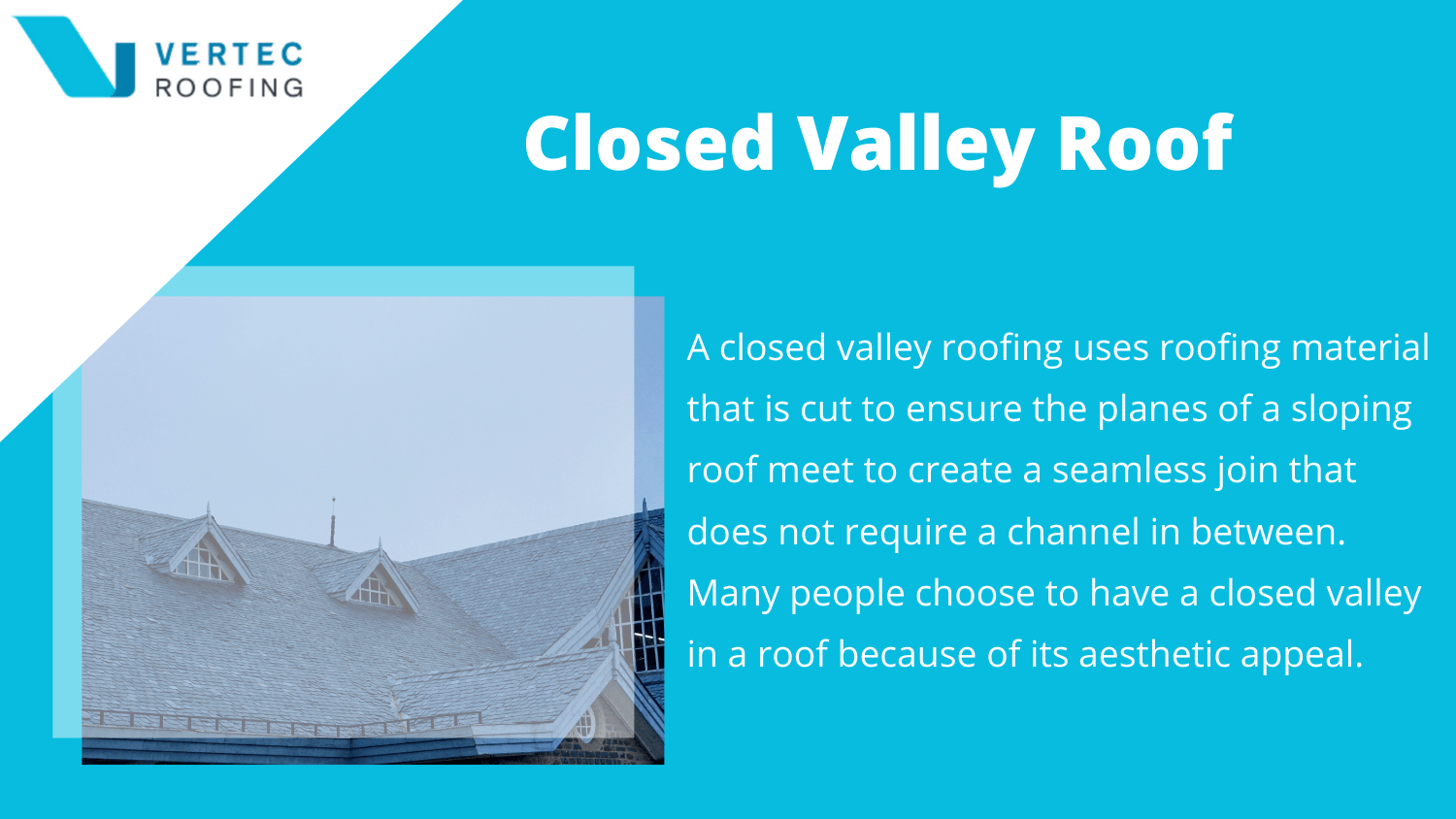As is the way with any industry, roofing terminology can be overwhelming – do not fear, at Vertec Roofing we are here to help. Today we’ll be discussing what is known as a roof valley, the different types of roof valleys and why it is important to know what is a valley on a roof.
What Is a Valley on a Roof?
A roof valley refers to a spot in the roof wherein two sections of sloping roofing meet. This is an area designed for water to efficiently flow down your roof and into your guttering. Some valleys may look like a seamless joint with waterproofing underneath, and other valleys use roof valley flashing with a small channel between the roofing sections to ensure an efficient flow of water and waterproof seal between the two sections of roof.
If this is still hard to picture, think of it as the inside corners on your roof, or internal folds.
Types of Roof Valleys
What is a valley on a roof? As Sydney’s roofing experts, understanding the different elements of a roof is our specialty. While you may have not heard of a valley in a roof before, it is still important to know what it is and the different types of valleys that can be used on your home’s roof.
Open Valley Roofing
An open valley is one that is not covered by roofing material and exposed to the open area on your roof. Do not worry – although they are open and you may think having an exposed valley as a potential to leaks and problems, an open valley is actually a great solution for many properties. When installed properly with the appropriate roof valley flashing and materials, open valleys are completely waterproof and sealed.
Closed Valley Roofing
Closed valley roofing uses roofing material that is cut to ensure the planes of a sloping roof meet to create a seamless join that does not require a channel in-between. Many people choose to have a closed valley in a roof purely because of the aesthetic appeal.

Closed Valley vs Open Valley Roofs
When used for the right applications and installed correctly, both open and closed valleys are great options for residential and commercial properties. When it comes down to cost, open valley roofs can be more expensive as they require additional materials, especially if you have a significant amount of valleys on your roof.
Although closed valleys may seem like the better option at a glance, they also have their drawbacks. With the closed valley design, there is only a single waterproofed layer between the rain coming down and the internal area of your roof. As open valleys require extra flashing in between the two roof slopes, they also have an added level of waterproofing. More often than not, metal roof valley flashing is used which is impermeable by water and also helps it move faster down your roof. This is an added benefit for low pitched roofs that struggle with water collection.
Closed valleys are also considered more aesthetically appealing as they do not require sheet metal valleys which may break up the overall look if you use materials other than sheet metal for your roofing. That being said, many Australians have metal roofs and there are many companies that have a wide range of colours and finishes to suit your needs.
Common Roof Valley Issues
What is a valley on a roof with leaves in it? A big issue. The biggest problem for open valley roofs is leaves collecting in them. When leaves and debris build up in a valley, they prevent water from efficiently flowing down the channel and off your roof. As this progresses and more debris and water accumulate the flashing weakens and corrodes as a result. With the flashing compromised, water might penetrate into your roof and leaks could occur. If this is found to be the case, the flashing will need to be replaced.

This issue occurs especially for houses under or near large trees as leaves can easily fall and collect in the valleys.
That’s why it is important to regularly inspect your roofing and flashing to check for any issues. It may take months of years for these issues to be noticed without inspection as the leaks and corrosion progress over time, rather than a large leak presenting itself immediately.
Do I Need Valley Flashing on My Roof?
Flashing is a very important part of roofing and protecting your roof and home from issues of moisture intrusion. Flashing is the pieces of impervious material that are placed on your roof to prevent moisture from getting through. One of the main applications for flashing is in open valleys. Without flashing, moisture may penetrate the join between the two roofing sections and get into the inside your roof, which could result in a whole host of problems for you. What is a valley on a roof without flashing or being waterproofed? Another big problem.
Vertec Roof – the Roof Valley Specialists
At Vertec Roofing we pride ourselves of in-depth knowledge and industry leading practices when it comes to all things roofing. If you have any questions about what is a valley on a roof or unsure what the best choice for your home is, do not hesitate to get in contact. We are happy to inspect, repair and install roof valleys across all of Greater Sydney. We’re Sydney’s leading team of roof repair experts.
Call us on (02) 8007 4366 or head to our contact page today.

